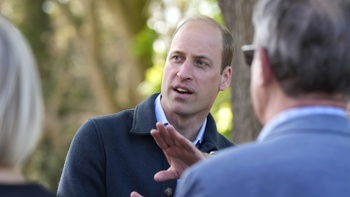
Principals warn there is an increasing amount of peer pressure for younger students to start vaping - a habit that has become a significant problem in almost half of all central Auckland primary and intermediate schools.
Life Education Trust chief executive John O'Connell said the organisation had this year seen an increase in the number of schools asking for support in addressing vaping among 10- to 13-year-old students in years 7 and 8.
Data collected by the trust found 45 per cent of leaders at primary and intermediate schools in central Auckland saw vaping as a significant issue. That's compared with a national average of 18 per cent.
Other "hot spots" this year included Canterbury, Hutt Valley and Central Otago, O'Connell said.
"Like anything, it's the trend. When older kids start doing it then younger kids will start flowing that down. It's that peer-pressure, copying type scenario," he said.
"It certainly is escalating. It's not something that's going to disappear overnight."
O'Connell said a small number of children would try vaping once and be done with it, while there were others who wanted to "push the barrow a little more" and were becoming more regular vapers.

Increasing numbers of primary and intermediate school aged children are vaping. Photo / 123
He said it was a major disruption for schools having children sneaking off to the toilets to vape and missing class as well as the time it took schools to manage the issue.
And while it wasn't a major problem for all parts of the country it was only a matter of time before the trend spread, he said.
"It's like a plague. If it's strong in one area then it begins to spread across."
Jonathan Tredray, Northcross Intermediate School principal and vice-president of the New Zealand Association of Intermediate and Middle Schools, said the problems seemed to have been more prevalent last year.
"It's this real peer pressure, be-cool thing."
Tredray said his major concern was the long-term effects it would have if children took up vaping.
"I know that in a few years it's going to start taking its toll on their health."
He said most schools, including Northcross, took a zero-tolerance approach to vaping and students caught were immediately suspended. Parents were also brought in to discuss the issue and students were supported with counselling on their return.
Tredray believed it was important to educate students about vaping and the effects so they could make an informed decision in future about whether it was a path they wanted to go down.

Increasing numbers of intermediate-aged children are vaping. Photo / Michael Craig
Life Education Trust programme and development manager Jo Mortimer said educators were working to make sure students knew exactly what vaping was and what chemicals were in it.
"A lot of kids think vaping is water vapour," she said. "As soon as they understand what it is they can quite quickly see that it could be harmful."
Asthma and Respiratory Foundation NZ chief executive Letitia Harding said she was also hearing from more schools trying to address vaping among students.
Most vapes contained nicotine which could not only lead to addiction but harmed brain development in adolescents, affected concentration and increased anxiety, she said.
Aside from nicotine, vapes contained chemicals which affected lung and heart health, and epithelial cell development.
"It does actually have these physical effects on the health. Do we really want to be exposing kids and youth to that - getting them addicted to it, knowing there's going to be harm? The potential is that there are long-term negative effects which haven't been ruled out from these products either."
As for how the trend has been allowed to emerge, Life Education's O'Connell blamed ongoing delays by the Government in introducing legislation around vaping for "opening the flood gates".
Plans to regulate vaping were announced in November 2018 and in August last year a law was passed making it illegal to sell vaping products to those under 18, prohibiting advertising and restricting the sale of flavours to specialty stores.
Associate Minister of Health Dr Ayesha Verrall said the Government was committed to protecting children, young people and non-smokers from the risks associated with both smoking and vaping.
Schools, kura kaupapa, kōhanga reo and early childhood facilities have had to display "no vaping" signage since early March.
"Schools are also required to take all reasonably practicable steps to ensure that no person smokes or vapes in any part of their school," Verrall said.
"Regulating vaping products is a complex area. We will be making announcements on this in the near future."
Vaping in kids
- Developing brains are more easily hooked on nicotine, with some studies suggesting it can take as little as a day or two for addiction to begin.
• Nicotine use in adolescents also affects brain development by disrupting the formation of brain circuits that control attention, learning, susceptibility to addiction, mood and impulse control.
• Aside from nicotine, vapes contain chemicals which affect lung and heart health and epithelial cell development.
• Some flavours which appeal to kids, such as vanilla and cinnamon, cause increased damage to the lungs because they are safe to eat, but not inhale.
• While the ingredients in themselves may be safe, when heated the vapours could become harmful for inhalation or degrade into other harmful compounds.
Take your Radio, Podcasts and Music with you









